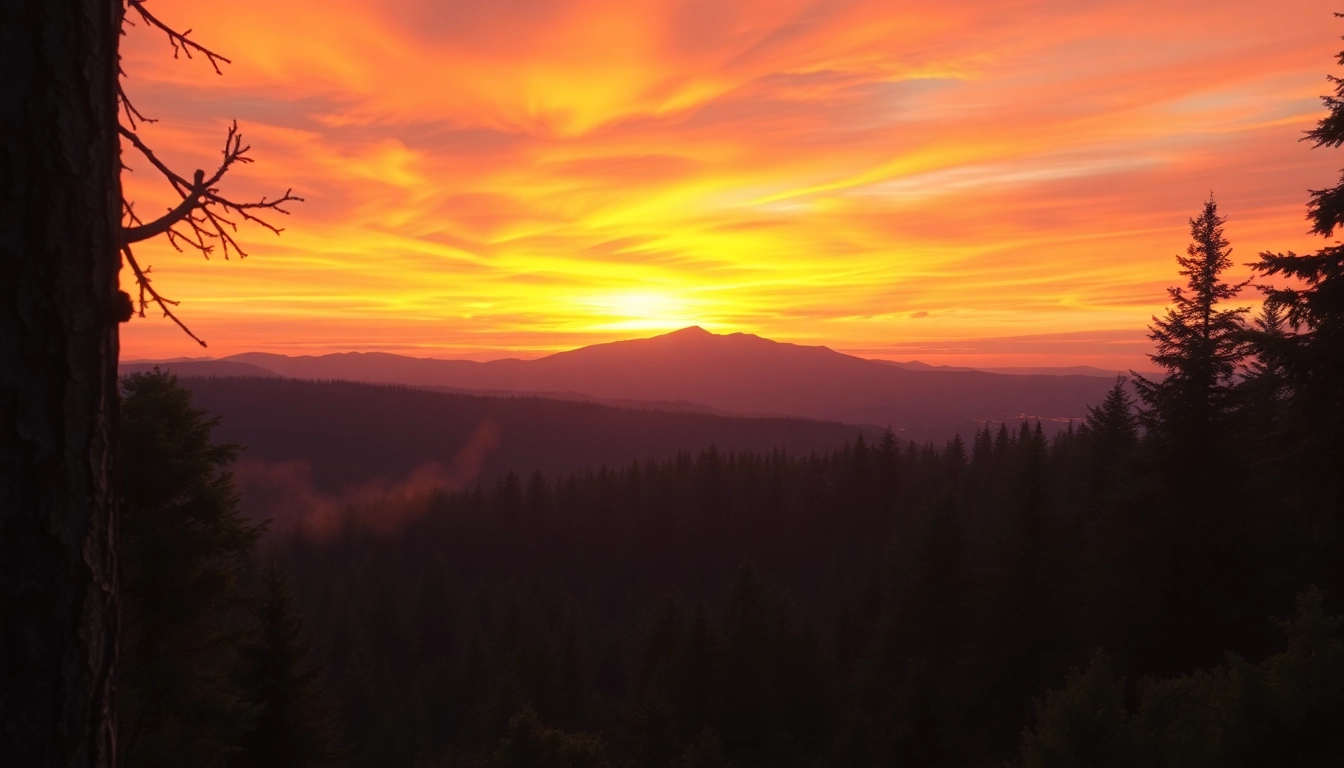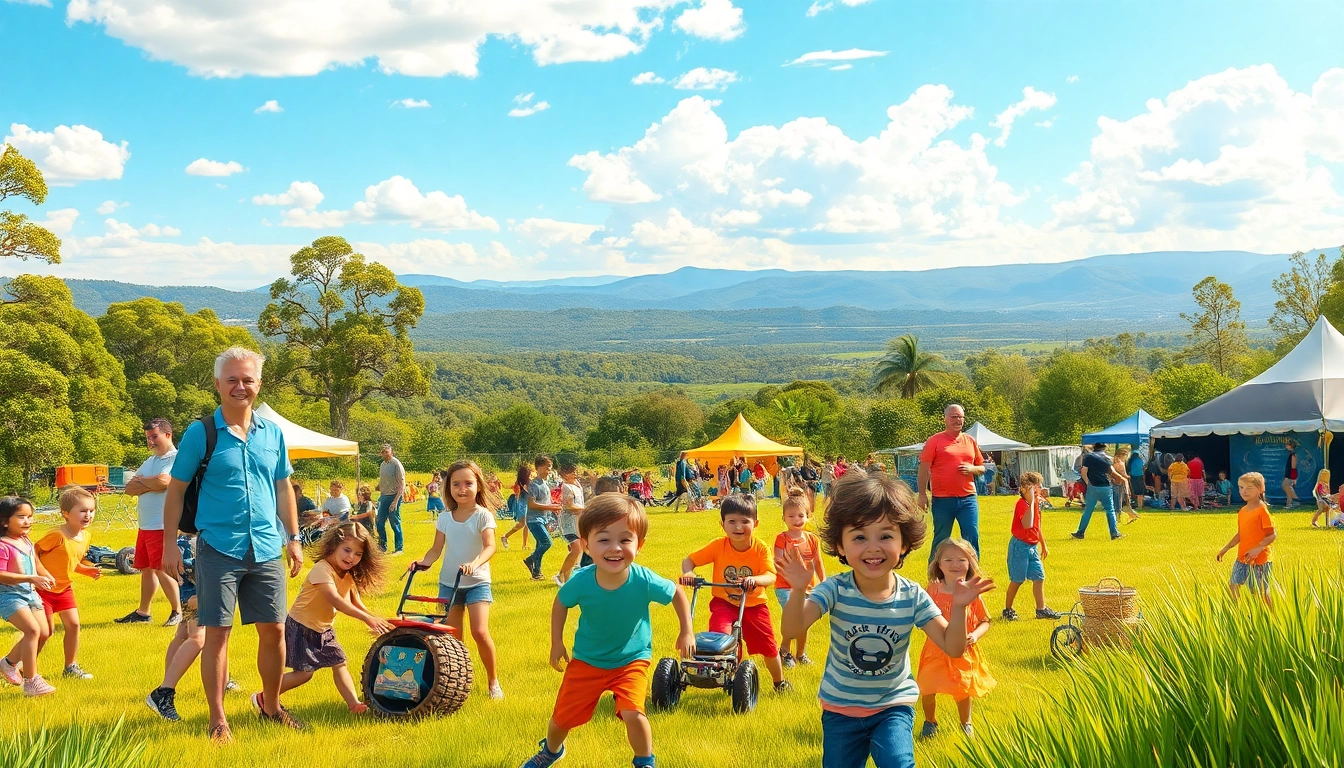Understanding the Impact and Management of Wildfire Events
Defining Wildfire Events
Understanding wildfire events requires a thorough exploration of their nature, characteristics, and the differences between various types of wildfires. These events are not just localized threats; they represent a complex interplay of ecological, meteorological, and human factors. As we delve deeper into this subject, it becomes clear that the implications of wildfire events extend beyond immediate destruction, affecting ecosystems, communities, and economies alike. For those interested in the comprehensive impact of these phenomena, resources like wildfire events provide critical insights into managing and understanding these critical incidents.
Nature and Characteristics of Wildfire Events
Wildfire events can express themselves in various forms, from small grass fires that are quickly contained to massive, uncontrolled infernos that consume thousands of acres. Their intensity and spread can vary greatly based on several factors, including the type of vegetation, weather conditions, and terrain. Generally, wildfires are categorized into three main types:
- Ground Fires: These occur beneath the surface and often ignite smoldering peat or other organic materials.
- Surface Fires: These fires burn along the ground and are typically less intense, allowing some vegetation to survive.
- Crown Fires: These are the most dangerous, igniting the tops of trees and creating a rapidly spreading inferno.
The behavior of a wildfire is influenced by its surroundings, including availability of fuel, moisture levels, and wind patterns. Understanding these characteristics is critical for fire management strategies and risk assessment.
Types of Wildfire Events: Understanding the Differences
There are definitive categories within wildfire events that help in classifying their behavior and potential impact. Recognizing these categories is essential for effective response strategies:
- Wildland Fires: These occur in areas with significant vegetation and include forest fires and grassland fires.
- Prescribed Burns: These are intentional fires set to manage vegetation, improve wildlife habitat, or reduce fuels for uncontrolled wildfires.
- Firestorm Events: These happen under extreme conditions with unusual intensity, often resulting in massive destruction.
Each type has unique characteristics and management approaches, making it imperative for communities and fire management teams to tailor their responses accordingly.
The Role of Climate in Wildfire Events
Climate is a significant driver of wildfire occurrences. Changes in temperature, precipitation patterns, and humidity greatly influence the likelihood and severity of wildfires. For instance, warmer temperatures can dry out vegetation, acting as a catalyst for fire ignition. Prolonged periods of drought can lead to an accumulation of combustible materials, creating perfect conditions for wildfires. In contrast, increased rainfall can result in more vegetation growth, which may lead to increased fuel availability. As such, understanding climate patterns is essential in devising effective wildfire management strategies.
Causes of Wildfire Events
The causes of wildfire events are multifaceted and range from natural occurrences to human activities. Identifying these causes is crucial for implementing preventive measures and reducing fire risks.
Natural Causes: Lightning and Weather Conditions
Lightning strikes are among the leading natural causes of wildfires. When lightning hits dry vegetation, it can ignite fires that spread rapidly, especially during dry weather conditions. Additionally, specific weather patterns, such as Santa Ana winds in California, can exacerbate wildfire conditions by carrying embers across long distances and increasing the intensity of existing fires.
Human Contributions to Wildfire Events
Human activities significantly contribute to the onset of wildfire events. Common causes include:
- Campfires: Unattended or improperly extinguished campfires can quickly lead to wildfires.
- Discarded Cigarettes: Careless disposal of cigarettes can ignite dry grass and foliage.
- Arson: Deliberate acts of setting fires are major threats to wildland areas.
- Equipment Use: Sparks from machinery, power lines, or vehicle exhaust can ignite surrounding vegetation.
Recognizing these human-induced factors is vital for developing educational programs aimed at prevention and safety.
Preventive Measures Against Common Causes
Preventing wildfire events often revolves around community education, proper land management, and changes in human behavior. Key measures include:
- Public Awareness Campaigns: Educating the public about safe campfire practices and proper disposal of smoking materials.
- Land Use Planning: Creating buffer zones free from combustible materials around residential areas.
- Regular Community Drills: Engaging communities in fire drills enhances preparedness and response during a wildfire event.
By focusing on these preventive measures, communities can reduce the risks associated with wildfires and foster a culture of safety.
Consequences of Wildfire Events
The aftermath of wildfire events extends far beyond the immediate destruction. Understanding the multifaceted consequences can help communities better prepare and respond.
Environmental Impact on Ecosystems
Wildfires can lead to significant changes in ecosystems. While some species thrive in post-fire landscapes, others may face extinction. The immediate destruction of habitats, soil erosion, and changes in vegetation composition can alter ecosystems for years. Fire can also disrupt nutrient cycles, leading to changes in plant growth patterns and impacting wildlife habitats.
Health Risks Associated with Wildfire Events
The health risks posed by wildfire events are profound. Smoke from wildfires can cause respiratory issues, eye irritation, and long-term health complications in vulnerable populations. Beyond physical health, the psychological impact of wildfires can lead to increased stress, anxiety, and trauma for those affected. Community health services must be prepared to address these issues in the wake of a wildfire.
Economic Effects on Local Communities
Wildfire events can have catastrophic economic effects on communities. The immediate cost of firefighting efforts, property losses, and infrastructure damage can be astronomical. However, the longer-term impacts, such as decreased property values, loss of tourism, and reduced local economies, can be equally devastating. Recovery efforts often require substantial financial support and can take years, or even decades.
Management Strategies for Wildfire Events
Efficient management of wildfire events calls for a comprehensive understanding of both firefighting techniques and community engagement. Different strategies can effectively mitigate the negative impacts of wildfires.
Firefighting Techniques and Technologies
Firefighting techniques have evolved significantly over the years. Different strategies include:
- Aerial Suppression: Utilizing aircraft to drop water or fire retardants on active fires.
- Firebreaks: Creating fuel-free areas to slow the spread of fires.
- Controlled Burns: Implementing prescribed fires to manage vegetation and reduce fuel accumulation.
Advancements in technology, such as drones for reconnaissance and satellite imaging for monitoring hot spots, have transformed the way fire management teams respond to incidents.
Community Preparedness and Response Plans
Developing community preparedness plans is essential for effective wildfire management. Key components include:
- Evacuation Routes: Clearly defined paths for residents to evacuate safely during an emergency.
- Emergency Kits: Encouraging residents to prepare survival kits containing essential items.
- Regular Updates: Implementing systems for timely information dissemination during fire events.
Engaging the community in the preparation and response planning fosters resilience and improves overall safety during wildfire events.
Policy Development and Environmental Regulations
Effective policy development and environmental regulations play a critical role in managing wildfires. Strategies may involve:
- Zoning Laws: Implementing regulations on land development to prevent high-risk construction in fire-prone areas.
- Forest Management Policies: Advocating for sustainable forest practices that reduce wildfire risks.
- Insurance Regulations: Reviewing insurance policies to ensure adequate coverage for wildfire-related damages.
These policy measures help create a structured response to wildfire events, promoting community safety and environmental sustainability.
The Future of Wildfire Events
Looking ahead, the frequency and intensity of wildfire events are expected to increase due to climate change and evolving land use practices. Adapting to this changing landscape is critical for communities, policy-makers, and fire management agencies.
Climate Change and Increasing Wildfire Frequency
Climate change has emerged as a pivotal factor in the increasing occurrence of wildfires. With rising global temperatures, regions once considered safe from wildfires may become more vulnerable. Understanding these shifts is essential for creating proactive strategies and safety measures that anticipate future risks.
Innovations in Wildfire Prediction and Management
Recent innovations in technology have revolutionized wildfire prediction and management. Advanced modeling and simulation software can predict fire behavior under various conditions, while real-time data collection makes it possible to monitor wildfire spread accurately. Utilizing machine learning algorithms and artificial intelligence can further enhance predictive capabilities, providing more accurate forecasts for affected communities.
Community Engagement and Education Efforts
Community engagement is crucial for building resilience against wildfire events. Establishing programs that educate residents about fire safety, promoting local volunteer firefighting teams, and fostering partnerships with environmental organizations can empower communities. By creating a culture of preparedness, regions can better mitigate the risks associated with wildfires.













Post Comment